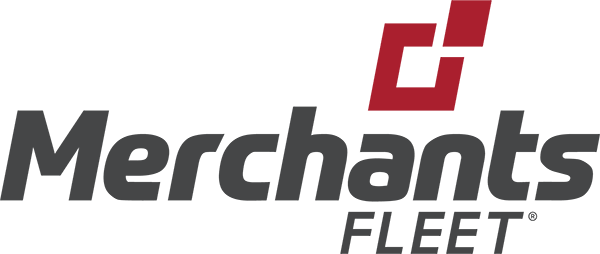How to Write a Fleet Vehicle Services RFP [+ Templates]
Whether you are looking at fleet management for the first time, considering switching providers, ensuring that your current provider’s offering is still competitive, or want to add specific services to an existing fleet, issuing a Request for Proposal (RFP) is often the go-to process for many companies. What makes this process both ideal and challenging is that there is no one way to create an RFP.
A simple Google search for “fleet management rfp” will show you a slew of RFPs of all shapes and sizes and across different industries. The benefit of using the RFP format is that you get to tailor the request to your needs while offering a transparent and standardized process for potential vendors. The challenge is creating a framework that hits on the correct level of detail, so you get the necessary information from fleet providers to make an educated decision.
Before we get started, download our free fleet services RFP templates >>
- Define Your Goals First
- 8 Key Ingredients of an Effective RFP
- Determine What to Ask Providers
- Prepare for Responses
- Pave the Way Toward a Solid Decision
- Use a Fleet Services RFP Template to Put it All Together
Define Your Goals First
The key to a productive fleet services RFP is clarity. The clearer you can be about your goals and what specifically you need and expect from a fleet provider, the more accurate proposal information you will receive, and the better sense you will get of how a provider will fit with your company.
The different types of Fleet RFPs a company could issue:
- Fleet Leasing RFP
This type of RFP should define your vehicle needs including the length of time you need your vehicles, the number of vehicles you need, and the types of vehicles.
- Fleet Remarketing RFP
In this RFP, you should explain your vehicle disposal needs, including the number and types of vehicles.
- Fleet Maintenance RFP
Define your current fleet maintenance program and how you would like it to improve. Are you looking to control costs or minimize downtime?
- Fleet Consulting RFP
Here, you should explain the challenges you are currently facing with your fleet and your ultimate goals.
- Fleet Technology RFP
Are you looking to switch technology providers or incorporate new systems into your fleet? Detail your current setup and how you see the future of your fleet technology.
- Fleet Management RFP
This RFP would include a comprehensive look at all of the fleet management services your company needs.
Each type of RFP will require a close analysis of a certain part of your operations. For example, Geotab notes that a fleet technology and telematics RFP should include considerations about security, compliance, and support, which would not be necessary line items in a fleet remarketing RFP.
Before you start to lay out your fleet services RFP, it may be useful for you to take some time yourself or with your team to lay out the specific challenges you are looking to solve and clearly spell out your goals. It is often worthwhile to engage internal stakeholders in this process, so you have the most accurate picture of your organization’s fleet needs. This also creates the opportunity to build buy-in early in the search process, so expectations and selection criteria are clear for everyone.
The RFI Process
A request for information (RFI) is a great way to gather preliminary information from suppliers before writing a fleet services RFP.
According to TechTarget, “an RFI is typically the first and most broad series of requests intended to narrow down a list of potential vendor candidates.” If you are looking for information but you are not sure about the exact services or solutions you need, an RFI can help you ask general questions and get a feel for the current marketplace.
“An RFI collects mostly qualitative information that helps determine if potential suppliers can meet the needs of the desired product or service,” Rob Daziel, director of supply chain management for Merchants Fleet, told Automotive Fleet. “After using the information from the RFI and narrowing down the potential suppliers, an RFP is issued to describe in detail the specifications of the intended purchase,”
8 Key Ingredients of an Effective RFP
While there is no universal way to write a fleet services RFP, there are critical pieces that should be included to make it as effective as possible.
Make sure you do not overlook these core pieces of information. You want prospective vendors to be able to get a sense of what it would be like to work with your company, both during the RFP process and if they were to win your business.
- Describe Your Company and Your Fleet
Take the opportunity to describe your company, your fleet, and your use case. By providing a snapshot of your organization, the type of vehicles that are used, and how vehicles are used, you give providers the chance to familiarize themselves with how you operate and better determine whether or not they are a fit for you.
Consider being specific by providing a list of the number of each type of vehicle in your fleet. This level of detail helps fleet companies provide a more tailored response, and it provides important context when they price their services.
Essentially, the clearer the picture you give, the more accurate providers can be in their proposal. The following factors will impact what a fleet provider may or may not be able to offer you:
- Short-Term or Seasonal Needs
- Whether or Not You Utilize Vans or Upfitting
- The Regions Where Your Fleet Operates
2. Explain Your Challenge
Make sure to include any constraints your fleet provider should be aware of. This ultimately saves providers from proposing options that aren’t feasible, and saves you from wading through proposals that do not offer workable solutions.
3. Highlight the Essentials
Double check that your basic contact and submission information is accurate and detailed enough. Are proposals supposed to be emailed or mailed? Do you require multiple copies? Make sure there is a contact person listed for questions. If there is a defined Q&A opportunity or timeframe, make sure it is clearly stated.
4. Share Your Timeline
Clearly outline each stage of your RFP process. This should include:
- The Review Period for Proposals
- When Companies Should Expect to be Contacted About Next Steps
- What Those Next Steps Are — For Example, is There a Phone Screen Stage or Will You Be Having In-Person Meetings Right Away?
- Any Associated Review Periods and When You Expect to Make Your Final Decision
Remember that it is always courteous to notify vendors who have not been selected at each stage.
5. Consider Sharing Evaluation Criteria
It is ultimately up to you what level of detail you want to share about how proposals will be evaluated. However, it can be helpful to share whether there is a scoring process or if certain aspects of the proposal itself will be weighed more heavily than others. Remember, being transparent can help vendors deliver more relevant information to facilitate a better decision.
6. Consider a Service Level Agreement (SLA)
Automotive Fleet states that “an SLA is a very useful tool for both the supplier and customer in setting service requirements, tracking mechanisms, and establishing consequences for performance below set standards.” SLAs should define standards for each of the services you need, such as leasing, maintenance, fuel card management, etc. This will help both you and the fleet management company create a realistic and specific program.
7. Clarify Your “Must-Haves” vs. “Nice-to-Haves”
The fleet services RFP process is a great way to determine what fleet providers might be able to offer in value-added services to your operation, especially if you are considering changing providers.
However, it is important to clarify what your key needs are and what is essentially a “wish list.” This will enable vendors to give you a realistic proposal (and know what key services they are being evaluated for most carefully) while also providing insight about areas you would eventually like to address.
8. Include a Pricing Template
When you sit down to evaluate and compare fleet providers, it is important that you compare apples to apples as much as possible. This is where including a pricing template can be essential.
In a pricing template, you can state how you want costs broken down — such as dollars per incident or percent markup — so you get accurate and comparable estimates. It is also helpful and fair to request that any vehicle and lease rate pricing be based on a set date, as this pricing tends to fluctuate over time. Having a date as a reference point helps ensure that you are making accurate comparisons.
Determine What to Ask Providers
Just like you need to be clear on your goals, you need to be clear on your selection criteria. When you are clear on your criteria, it makes it easier to select the most useful questions to include on your RFP. As Government Fleet writes, “’Can you provide it?’ is a far better form for an RFP than ‘Tell me what you can provide.’”
For example, if it is critical to have a dedicated consultant to examine data and help evaluate fleet efficiency, it makes sense to add more questions about consulting experience, reporting, and client service. These questions should then take precedence over insurance and fuel card questions.
It is also important to include a variety of questions that touch on the qualitative side of fleet management as well as the quantitative. You want to get a clear sense of how a company will work with yours, so things like client service structure and how they handle client questions or complaints is just as important to evaluate as pricing, financials, and years of experience.
Here are some key categories and topics to consider as you build out your fleet services RFP. Think about the most important things you want to learn as you put together questions for each category. What is most important to you and what specific needs do you have around the following?
- Leasing and Funding
- Billing
- Purchasing and Acquisition
- License and Title
- Fuel Management
- Maintenance Management
- Accident Management and Safety Programs
- Telematics
- Disposition and Remarketing
- Consulting Services
- Technology and Reporting Capabilities
- Account Management and Onboarding
- Outsourcing
After you have determined what to ask, look at the questions holistically and eliminate those that may be phrased differently but are seeking the same information as other questions. This will help streamline the fleet management RFP. It is best to avoid having several questions that are ultimately asking the same thing, which can make your RFP long and result in repetitive answers that do not add useful information.
Prepare for Responses
After you have put time and thought into your fleet services RFP, it is equally important to consider your system for aggregating information from the responses and analyzing them.
Will you use an online tool to organize and store responses, or will you manually compile them? How will you compare your options? Will you examine each RFP submission separately, or will you examine various responses question by question? Some of this will be guided by any scoring process you may have established.
Pave the Way Toward a Solid Decision
It takes time and thought to put together an effective RFP, but the time invested in creating a detailed and effective document will pay off by giving you clearer information about what fleet providers can offer your organization.
Changing or adding a fleet provider significantly impacts your business operations, so you want to make sure your process leads you to a partner that can provide the solutions you need with a high level of flexibility and personalized service. With a bit of strategic thinking, an RFP can guide you to an effective business partnership that could last for years to come.
Use a Fleet Services RFP Template to Put it All Together
Using a template can make it easier to gather questions and lay out an RFP in a logical order.
We have created an example fleet services RFP template and a sample pricing template to show how all of the pieces are connected. Use these templates as a starting point for a draft, and then tailor them as needed.
Download your free fleet services RFP templates >>
Remember that ultimately, the best format is the one that will get your business the information it needs to make an evidence-based decision. Any template should be considered just a starting point. Make sure to eliminate sections or questions that do not apply to your business goals and adjust template language as needed to suit your organization’s standards. It may even make sense to use pieces from a few different templates and put them together.
If you have questions about fleet management RFPs or would like to discuss your options, please contact us and we will be happy to help.
Frequently Asked Questions
What is an RFS and when is it appropriate to use one?
What is an RFQ and when is it appropriate to use one?
Is an RFP legally binding?
Download Now: Free Fleet Services RFP Template
Create the best possible fleet vehicle services RFP for your business needs with our helpful template.





